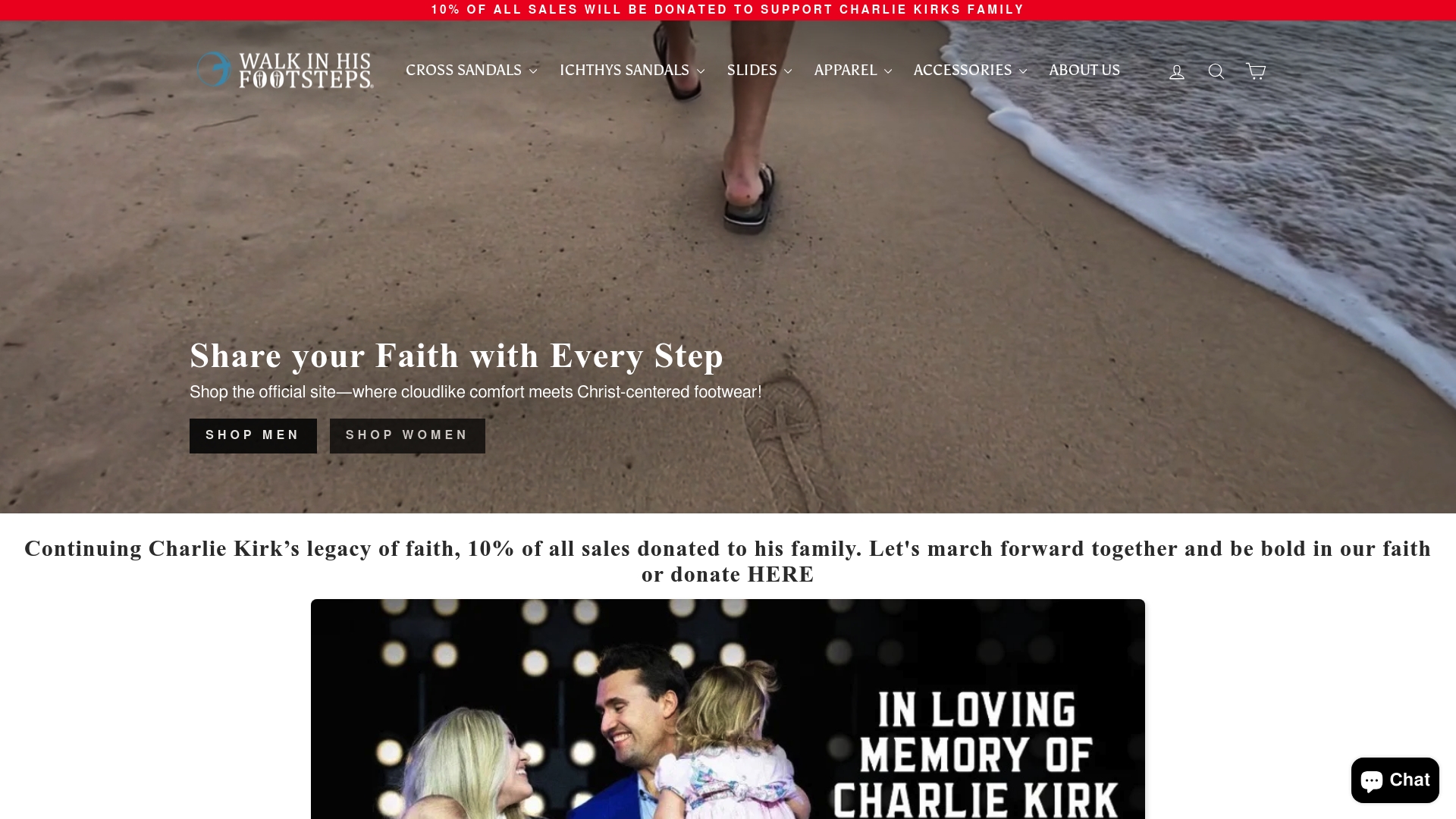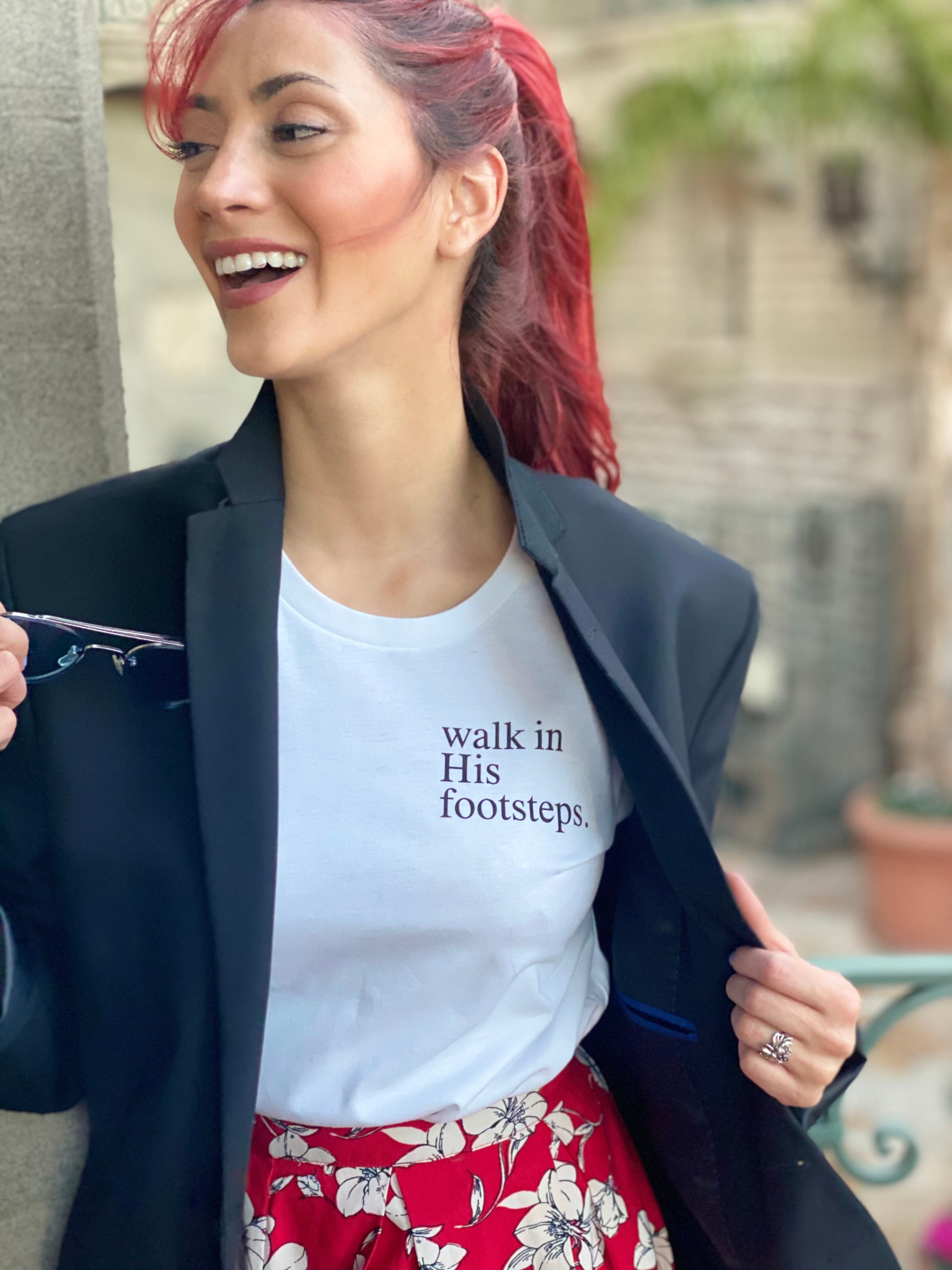Faith-based clothing is showing up everywhere, and it is not just about looking good or following the latest trend. A recent study found that people who wear religious symbols on their clothing are up to 30 percent more likely to engage in meaningful conversations about their faith. That sounds like fashion, but it is actually people using their daily wardrobe as a powerful tool for spiritual connection. The real story is that these clothes are quietly shaping identity, sparking dialogue, and turning every shirt or necklace into a personal testimony.
Table of Contents
- What Is Faith-Based Clothing?
- The Importance Of Faith-Based Clothing
- How Faith-Based Clothing Influences Identity
- Key Concepts And Symbols In Faith-Based Apparel
- The Role Of Community In Faith-Based Clothing Choices
Quick Summary
| Takeaway | Explanation |
|---|---|
| Faith-based clothing expresses personal beliefs. | It serves as a visual testament of spiritual identity, allowing individuals to communicate faith through fashion choices. |
| Wearing faith-based apparel enhances self-identity. | Clothing can reinforce spiritual self-perception, boosting confidence and creating a connection to religious values. |
| Community influences clothing choices. | Faith-based apparel reflects group identity and shared beliefs, reinforcing communal ties within religious communities. |
| Design features reflect spiritual significance. | These garments often incorporate biblical imagery and scripture, transforming clothing into a meaningful expression of faith. |
| Faith-based clothing encourages conversations about spirituality. | The messaging on these garments can initiate discussions, leading to deeper connections about religious beliefs among individuals. |
What is Faith-Based Clothing?
Faith-based clothing represents a meaningful intersection between spiritual expression and personal fashion, allowing individuals to communicate their religious beliefs through their wardrobe choices. Unlike traditional clothing, this specialized attire goes beyond aesthetic appeal and serves as a powerful form of personal testimony and spiritual identity.
The Spiritual Significance of Faith-Based Apparel
Faith-based clothing is more than just fabric and design. It represents a deliberate choice to integrate one’s religious beliefs into everyday fashion. For Christian individuals, these clothing items often feature symbolic elements that reflect biblical teachings, scripture references, or iconic Christian imagery such as crosses, fish symbols, or inspirational messages.
The core purpose of faith-based clothing transcends mere fashion statements. These garments function as:
- Visual Testimonies: Allowing wearers to share their spiritual beliefs without verbal communication
- Conversation Starters: Potentially creating opportunities to discuss faith with others
- Personal Affirmations: Reminding the wearer of their spiritual commitments and values
Design and Philosophical Foundations
Christian faith-based clothing typically incorporates design elements that are both meaningful and stylish. According to Christian Fashion Insights, these garments are carefully crafted to balance aesthetic appeal with spiritual authenticity. The designs often integrate:
- Scriptural quotes
- Symbolic religious imagery
- Modest and respectful styling
Moreover, Walk In His Footsteps offers deeper insights into how these clothing choices reflect personal spiritual journeys. The philosophy behind faith-based clothing is rooted in the belief that one’s external appearance can be an extension of internal spiritual commitment.
Ultimately, faith-based clothing represents a nuanced form of personal expression that allows Christians to celebrate their beliefs through fashion, transforming everyday attire into a meaningful statement of spiritual identity.
The Importance of Faith-Based Clothing
Faith-based clothing transcends traditional fashion by serving as a profound mechanism of spiritual expression, personal identity, and community connection. This unique form of apparel carries deep psychological and social significance that extends far beyond mere aesthetic choices.
Personal Spiritual Empowerment
Wearing faith-based clothing represents a powerful form of personal empowerment. According to psychological research on religious identity, clothing can significantly reinforce an individual’s spiritual self-perception and strengthen their connection to religious values.
The psychological benefits of faith-based clothing include:
![]()
- Emotional Affirmation: Providing constant spiritual reminder and comfort
- Identity Reinforcement: Creating a tangible representation of personal beliefs
- Confidence Enhancement: Supporting self-esteem through aligned personal expression
Community and Outreach Significance
Faith-based clothing functions as more than personal attire it serves as a subtle yet powerful communication tool within religious communities. These garments create opportunities for:
- Spontaneous faith conversations
- Recognizing fellow believers
- Demonstrating shared spiritual values
Walk In His Footsteps highlights how these clothing choices can bridge interpersonal connections and create meaningful dialogues about faith.
Cultural and Social Impact
Beyond individual experiences, faith-based clothing plays a significant role in cultural preservation and social understanding. By visually representing religious commitments, these clothing choices contribute to broader conversations about diversity, respect, and spiritual identity.
Ultimately, faith-based clothing represents a nuanced intersection of personal belief, cultural expression, and social communication a testament to the profound ways clothing can reflect and reinforce spiritual journeys.
How Faith-Based Clothing Influences Identity
Faith-based clothing serves as a powerful medium for personal and spiritual self-expression, playing a profound role in shaping individual and collective identity. This unique form of apparel goes beyond traditional fashion, functioning as a dynamic tool for communicating deeply held beliefs and personal values.
Psychological Dimensions of Identity Formation
Clothing acts as a powerful psychological mechanism for identity construction. According to psychological research on symbolic self-representation, individuals use clothing as a strategic method of communicating their inner beliefs and social affiliations.
Key psychological mechanisms of identity development through faith-based clothing include:
- Self-Perception Reinforcement: Aligning external appearance with internal spiritual values
- Emotional Consistency: Creating a harmonious connection between personal beliefs and visual representation
- Psychological Safety: Establishing a sense of belonging within a spiritual community
Social Signaling and Community Connection
Faith-based clothing operates as a nuanced form of social communication, enabling individuals to signal their spiritual commitments without verbal explanation. These garments create invisible yet powerful networks of connection, allowing wearers to:
- Recognize fellow believers
- Demonstrate shared theological perspectives
- Create opportunities for spiritual dialogue
Walk In His Footsteps explores how these clothing choices become instrumental in building and maintaining religious community bonds.
Transformative Personal Narrative
Beyond social interactions, faith-based clothing represents a personal narrative of spiritual journey. Each garment becomes a dynamic symbol of individual growth, theological understanding, and commitment to religious principles.
Below is a comparison table highlighting the key psychological, social, and personal identity roles of faith-based clothing as explained in the article.
| Aspect | Purpose/Benefit | Example from Article |
|---|---|---|
| Self-Perception Reinforcement | Aligns external appearance with spiritual beliefs | Wearing scripture-quoted apparel to reflect faith values |
| Emotional Consistency | Connects identity with visible expression | Using inspiring symbols for daily spiritual affirmation |
| Psychological Safety | Fosters sense of belonging within faith community | Recognizing fellow believers through similar attire |
| Social Signaling | Nonverbal communication of religious commitment | Cross symbol signals Christian faith without dialogue |
| Transformative Narrative | Represents spiritual growth and personal journey | Choosing garments marking stages in personal faith |

Ultimately, faith-based clothing transcends mere fabric and design. It emerges as a complex, multifaceted expression of identity that interweaves personal belief, cultural heritage, and spiritual evolution into a tangible, wearable testimony.
Key Concepts and Symbols in Faith-Based Apparel
Faith-based apparel represents a rich tapestry of symbolic language, where every design element carries profound theological meaning and spiritual significance. These carefully crafted garments transform clothing from mere fabric into a powerful medium of religious expression and communication.
This table organizes common Christian faith-based clothing symbols and their meanings to clarify their spiritual significance for readers.
| Symbol | Visual Representation | Spiritual Meaning |
|---|---|---|
| Cross | A simple or stylized cross | Christ’s sacrifice and redemption |
| Fish (Ichthys) | Fish outline | Early Christian identity and teachings |
| Dove | Silhouette of a dove | Holy Spirit and divine peace |
| Scriptural Quote | Biblical verse or phrase | Encouragement and evangelism |
| Jesus Fish Slip-On | Fish symbol on footwear | Daily reminder of faith and testimony |
Symbolic Visual Language
Christian faith-based clothing utilizes a complex visual vocabulary that communicates spiritual narratives through intentional design choices. According to religious symbolism research, these symbols serve multiple communicative and spiritual functions.
Key symbolic representations in faith-based clothing include:
- Cross Imagery: Representing Christ’s sacrifice and redemption
- Fish Symbol (Ichthys): Signifying early Christian identity and biblical reference
- Dove: Symbolizing the Holy Spirit and divine peace
Biblical References and Scriptural Aesthetics
Many faith-based clothing designs incorporate direct scriptural references, transforming garments into wearable testimonies. These references serve multiple purposes:
- Providing spiritual encouragement
- Sharing biblical wisdom
- Creating opportunities for faith discussions
Walk In His Footsteps explores how these scriptural elements become powerful tools of spiritual communication.
Theological Principles in Design
Faith-based apparel design reflects deeper theological principles beyond visual aesthetics. Designers carefully consider modesty, dignity, and spiritual authenticity when creating these garments.
The fundamental design philosophy emphasizes:
- Respect for spiritual values
- Authentic representation of Christian principles
- Creating clothing that honors personal faith journey
Ultimately, faith-based clothing transcends traditional fashion, emerging as a sophisticated language of spiritual expression that communicates complex theological narratives through carefully curated visual and textual elements.
The Role of Community in Faith-Based Clothing Choices
Community plays a pivotal role in shaping faith-based clothing choices, transforming personal fashion into a collective expression of spiritual identity. These sartorial decisions extend far beyond individual preferences, becoming a nuanced dialogue between personal belief and communal religious culture.
Social Dynamics of Religious Dress
Faith-based clothing functions as a powerful social mechanism for community recognition and solidarity. According to sociological research on religious dress, clothing serves as a critical marker of group membership and shared theological perspectives.
Key community influences on clothing choices include:
- Group Identification: Visually signaling belonging to a specific religious community
- Cultural Continuity: Preserving and transmitting religious traditions through dress
- Collective Identity: Reinforcing shared spiritual values and beliefs
Spiritual Conformity and Personal Expression
While community expectations significantly impact clothing choices, faith-based apparel also allows for individual spiritual interpretation. This delicate balance creates a dynamic interaction between:
- Respecting communal religious guidelines
- Expressing personal spiritual journey
- Maintaining theological authenticity
Walk In His Footsteps explores how these community dynamics shape individual clothing decisions.
Ritual and Symbolic Communication
Faith-based clothing transcends mere fashion it becomes a ritual of community connection. These garments facilitate:
- Nonverbal spiritual communication
- Intergenerational religious dialogue
- Reinforcement of shared theological narratives
Ultimately, faith-based clothing represents a complex ecosystem of personal belief and communal identity, where individual choices are simultaneously influenced by and contribute to broader religious community narratives.
Step Into Your Faith with Purposeful Christian Apparel
After exploring how faith-based clothing can empower identity and spark meaningful conversations, you are probably seeking ways to bring these values into your daily life. Many Christians face the challenge of finding apparel that does more than just look good—it should also reflect your commitment, serve as a testimony, and create opportunities for connection. The article highlighted how meaningful symbolism like crosses or the Jesus fish can transform ordinary clothing into visual testimonies. But where do you find garments that truly honor your faith while offering comfort and authenticity?

Now you can make a powerful statement with every step. Discover the patented cross bottom and Jesus fish slip-on footwear at Walk In His Footsteps. Explore how our unique designs combine both comfort and faith, turning everyday shoes into symbols of belief. Embrace the chance to share your journey wherever you go. Visit Walk In His Footsteps today and take the next step in living your faith boldly.
Frequently Asked Questions
What is faith-based clothing?
Faith-based clothing represents a way for individuals to express their religious beliefs through fashion, incorporating symbols, scriptures, and designs that reflect spiritual values.
Why is faith-based clothing important for personal identity?
Faith-based clothing empowers individuals by providing a tangible representation of their beliefs, enhancing self-perception, and fostering confidence through aligned personal expression.
How does faith-based clothing facilitate community connections?
Faith-based clothing acts as a social signaling tool, allowing wearers to recognize fellow believers and engage in conversations about faith, reinforcing shared spiritual values within their community.
What symbols are commonly found in faith-based apparel?
Common symbols in faith-based clothing include crosses, fish symbols (Ichthys), and doves, each representing significant theological meanings and serving as visual testaments of faith.
Recommended
- Understanding Christian Clothing Stores: Faith and Fashion – Walk In His Footsteps
- Understanding the Christian Clothing Company and Its Values – Walk In His Footsteps
- Understanding Christian Clothing: Significance and Styles – Walk In His Footsteps
- 7 Tips for Choosing the Best Religious T Shirts – Walk In His Footsteps




